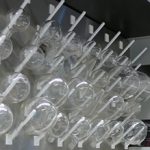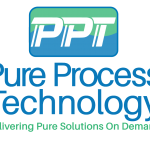
08 Jun 2019
According to a recent Bluefield Research report, Opportunities in U.S. Industrial Water: Market Size, Trends, and Forecast, 2018-2022, U.S. industries spent $10.2 billion on water management, including water acquisition, treatment, reuse, and discharge. The report also cites wastewater as a ‘key focus of change.’ The results of this report raise the question, “So what’s in your water distribution and management plan”? While all projects incorporate water for multiple purposes, RO (reverse osmosis) water is mandated by the type and usage of the user’s water requirements.
The application dictates the plan
The design of manufacturing facilities for therapeutic and pharmaceutical  applications requires the careful planning and consideration of many factors such as materials passing through the system, biosafety level, product partitioning, contamination control, regulatory environment, and tech transfer challenges. This type of planning must be thorough and all-inclusive. A water distribution plan may be overlooked by those unfamiliar with pre-construction phase planning but addressing water requirements and usage is crucial to successful operations and should always be included in the design stages.
applications requires the careful planning and consideration of many factors such as materials passing through the system, biosafety level, product partitioning, contamination control, regulatory environment, and tech transfer challenges. This type of planning must be thorough and all-inclusive. A water distribution plan may be overlooked by those unfamiliar with pre-construction phase planning but addressing water requirements and usage is crucial to successful operations and should always be included in the design stages.
Conferring with the experts
A & E firms, mechanical contractors, HVAC, and plumbing groups are experts in their design fields, but most will consult an HPW expert who can recommend the appropriate type of water treatment system after reviewing all specifications and challenges including space, plumbing, piping/pressure, regulatory, and municipal issues. Wasted time, money, and aggravation can be avoided with the valuable pre-planning advice of an industry professional. This crucial team member will have an established process to ensure that all planning, production, delivery, and installation stays on-track and meets expectations.
Consider all options for RO in the water distribution plan
Some missed opportunities for using RO water in facilities, that can make a difference in manufacturing processes, maintenance, and conservation, include the use of RO discharge water and retentate re-use.
1. RO Discharge Water
Pre-rinsing, laundry, toilet, and urinal flushing, irrigation, washing hardscapes, make-up water for cooling towers and water-cooled condensers, evaporative cooling, decorative fountains, swimming pools, water-cooled machinery, and vehicle wash, all make good use of RO discharge water. In addition, RO discharge water, which may require reconditioning before use, is one of the few alternate water sources that can be safely used for above surface irrigation as long as it is handled properly.
2. Understanding RO reject stream and retentate re-use
If a facility is concerned with water conservation, the most important component of the RO system is the reject stream and the retentate (that part of the feed that does not pass through the membrane) by-product. Although the retentate is often sent to the sewer it can be converted into a useful product by proper operation of the RO system. If the system produces a high rejection rate it will convert into a particularly concentrated retentate unsuitable for reuse. To circumvent this result, you would run the RO at 50% product to reject ratio conversion which will produce good quality, softened, filtered RO reject water. Reusing water to meet drinking standards requires chemical manipulation of the product water (RO permeate) which can be stabilized and made suitable for human consumption.
The resulting RO reject water is of better quality than the raw city water feed. In addition to the higher quality water obtained, when utilizing this RO rejection rate, the user will note extended RO membrane lifetime and little to no membrane cleaning. Re-use of the retentate includes vapor-compression still feed, clean steam generator feed, and cooling tower makeup.
Get your HPW expert involved in the planning stages
The importance of having a good water distribution/management plan is crucial to the success of any building project. Having a high purity water system expert on your team will ensure that the necessary groundwork for incorporating RO water into your plan is logical, legal, and conforms to your project footprint. Some water purification system companies offer in-house presentations that serve to inform and educate the whole project team and results in everyone understanding the process, issues, and challenges involved.
With your team on the same high purity water page, your water distribution and management plan will flow smoothly.

Does Your Project Water Distribu...
08 Jun 2019

Solvent Dispensing 101 – the Car...
15 May 2019

Hospital RODI Water System Proje...
18 Apr 2019

10 Apr 2019

27 Mar 2019